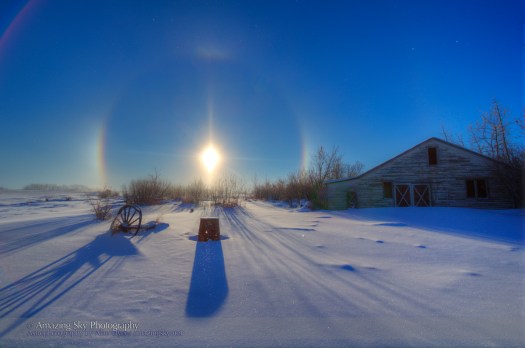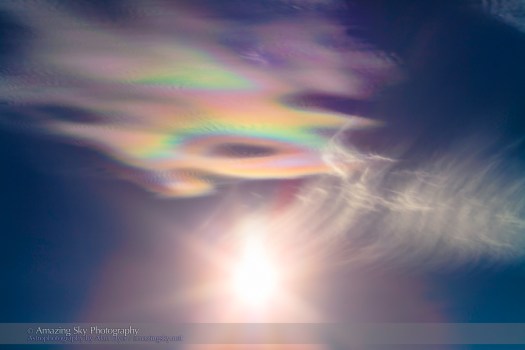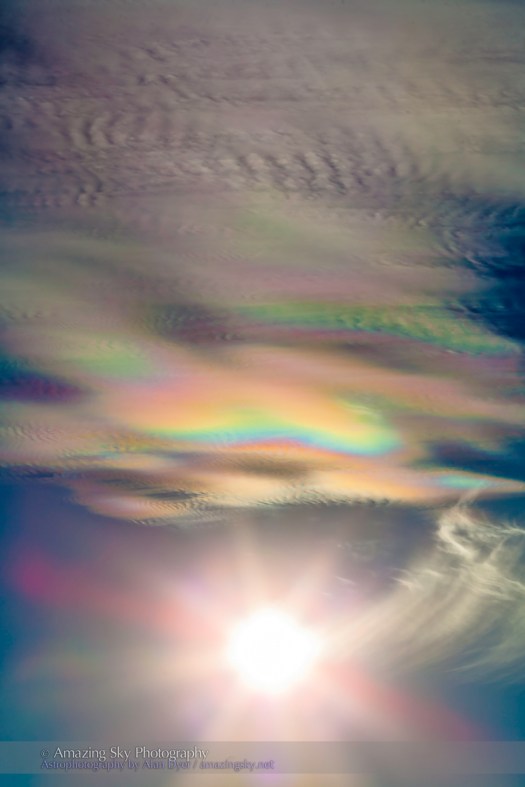Ice crystals create a ring of light around the waxing Moon.
Clouds have moved in this week in New Mexico but the advancing weather system also brought an atmosphere filled with high altitude ice crystals.
Earlier this week they created a lunar halo – a ring around the Moon. If you look closely you’ll see there are two rings. On the left and right sides (east and west) the halo splits into two. This is an effect of two haloes superimposed: the classic 22° halo and what’s called the “circumscribed halo” which changes shape and size depending on the altitude of the Sun or Moon.
In this case, the Moon was 62° up, and the appearance of the circumscribed halo exactly matches what computer simulations predict for this altitude.
See Les Cowley’s wonderful website on Atmospheric Optics and the page on the shape of the circumscribed halo.
The long 30-second exposure brought out the stars in the moonlit sky.
They say such haloes presage poor weather. This week that proved true as clouds and rain moved in.
– Alan, December 4, 2014 / © 2014 Alan Dyer





